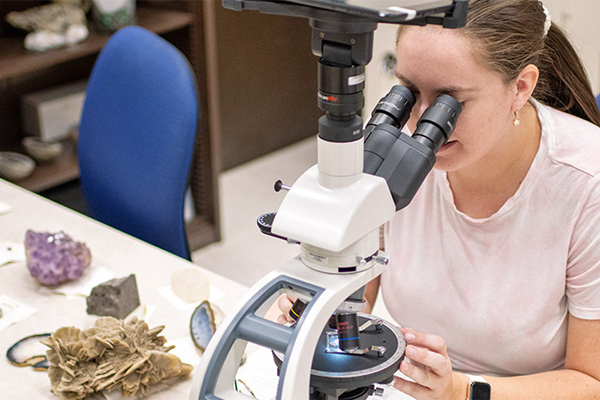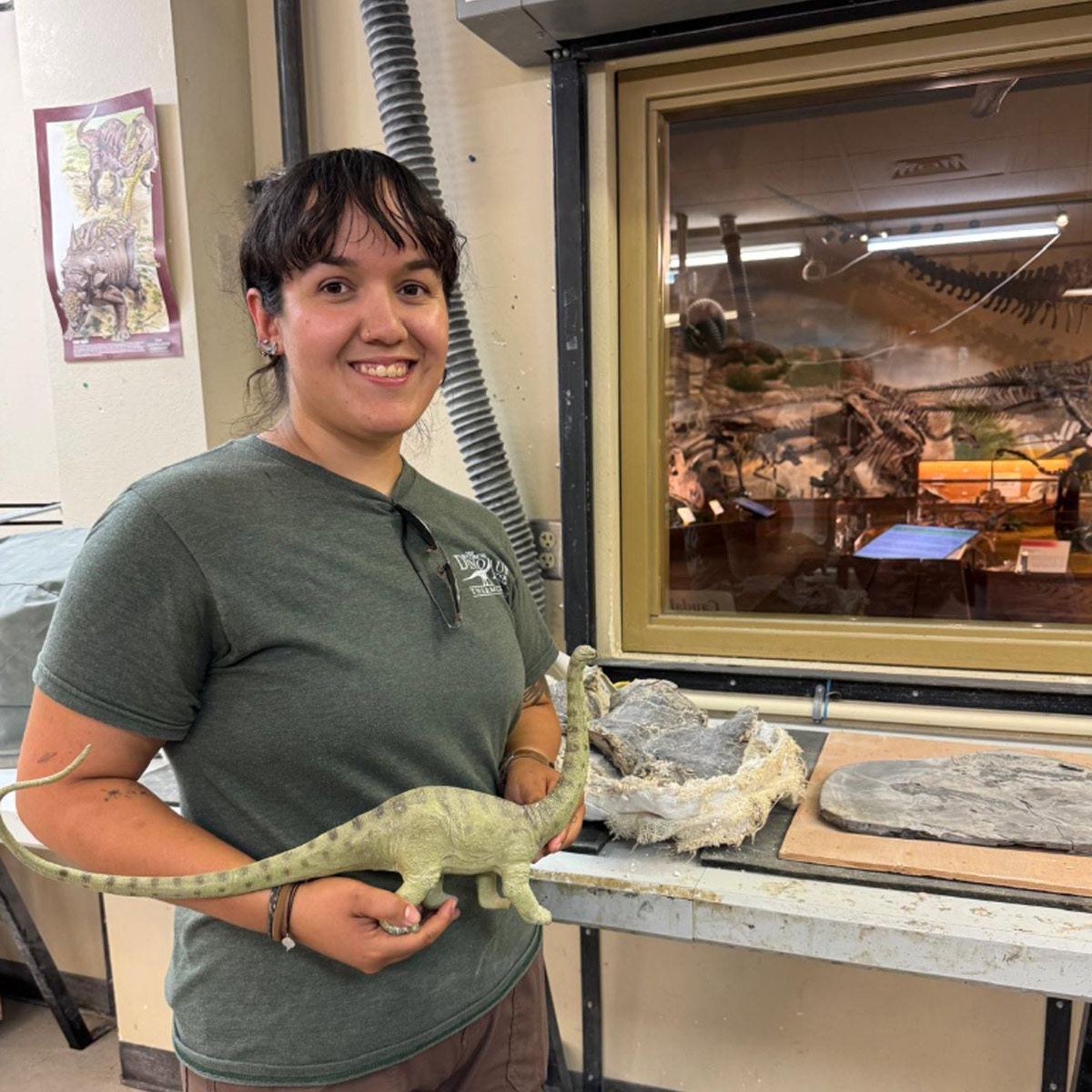Posted on August 16, 2022 by College of Sciences

Tom Varner, Environmental Science and Engineering Ph.D. Student
By Pelle Muñoz
Meet Tom Varner, a doctoral student and researcher at UTSA who specializes in aqueous geochemistry and hydrology.
After earning his undergraduate degree in geology from the University of Mississippi, Tom set his sights on a discipline that dealt with the direct social implications of special topics in his field of study, namely water scarcity and quality issues in various geographic regions around the world. This interest led him to conduct research under Saugata Datta, Chair of UTSA's Department of Earth and Planetary Sciences.
Tom recognizes a dedication to progress as a defining characteristic of UTSA. During his time at UTSA, a wide range of positive changes have been implemented in his department, the College of Sciences, and the university as a whole.
"UTSA is making rapid progress towards becoming a nation-leading academic institution, providing innovative research and serving the community of San Antonio," said Tom. "As a young university, UTSA is designing its own future in real time."
Though Tom's home department is the Department of Earth and Planetary Sciences, his program is based out of the UTSA Klesse College of Engineering and Integrated Design. This type of flexibility is what Tom has come to appreciate about the program.
"This duality has allowed me to take a diverse range of classes to expand my understanding of my field of research," said Tom. "I really enjoy the multidisciplinary aspect of the program which allows me to apply engineering concepts from my classes to my science-based research."
Tom's experience as a researcher began in 2017 during his time as an undergraduate in Mississippi. His research was focused on visualizing the ancestral pathway of the Mississippi river by studying detrital zircon grains, minerals derived from pre-existing rocks as a result of weathering and erosion, in sediment deposits. Analyzing the uranium in the zircon grains gave Tom and his fellow researchers a means to pinpoint the grain's formation age, which they then correlated to various sources upstream to determine the flow path of the river. From this, they were able to determine that the Mississippi River flowed along an east to west orientation millions of years ago rather than the north to south orientation observed today.
Tom's current research explores the mobility of arsenic from the sediments surrounding the Meghna River in Bangladesh, which is among the largest and most tidally active rivers in the country. The river flows through central Bangladesh, where elevated concentrations of arsenic in the groundwater threaten the welfare of millions of people. The project is a collaborative effort between researchers at UT Austin and Texas A&M, as well as Saugata Datta and Harshad Kulkarni, a lecturer and researcher in the UTSA Department of Earth and Planetary Sciences. Tom is utilizing a phenomenon known as a Natural Reactive Barrier (NRB) to treat and prevent cross contamination in the river and aquifer. By mixing oxygen-rich river water and reducing groundwater in the riverbank (prompted by the daily tides) it facilitates the formation of iron-oxides, which could effectively remove the arsenic from the groundwater.
As the recipient of a prestigious Fulbright scholarship, Tom will be relocating to Calcutta, India in January 2023 to continue his doctoral research. For a duration of nine months, he will be working alongside researchers at the Indian Institute of Engineering Science and Technology, Shibpur in collaboration with other local institutions and government entities to better the field's understanding of NRBs and their role in regulating the transport of arsenic. The project is expanding on the hypothesis motivating their NRB research along the Meghna River in Bangladesh, only Tom will be analyzing a NRB along the Hooghly River near Calcutta.
Tom cites two distinct ways in which the project in India will test our understanding of NRBs. First, the project's timeline accommodates the transition from the dry season to the monsoon season, which impacts the mixing of river water and groundwater. Second, the Hooghly River's status as a tidally active river across the Bengal Basin gives researchers an opportunity to draw comparisons and apply their understanding of similar processes impacting the mobility of contaminants found along river systems around the world.
"Through observing the changes to the NRB over this time, we can evaluate the effects of seasonality on the NRB's ability to immobilize or mobilize arsenic," said Tom.
Tom emphasizes the importance of seeking out any academic groups and professional organizations that the College of Sciences has to offer, and notes that it is one of the most important things an incoming or prospective student can do. "Not only will becoming involved in these groups provide a platform to meet other like-minded individuals in your field, but they also provide an excellent resource for future collaborative work, professional development, and networking."
After years as an accomplished student and researcher at UTSA, Tom feels confident that the skills he acquired will set him up for success in academic and professional settings. "The experience I have built as a researcher throughout my tenure at UTSA has given me a strong foundation of field-based knowledge." Said Tom. "I have a strong sense of confidence in my prospects because of the valuable contributions from UTSA, which have played a substantial role in my development." Tom is thankful for the wealth of knowledge and experiences accumulated during his time at UTSA. Looking forward, he continues to value his growth as a researcher and confront his field's challenges head-on.

Explore the EPS Department!
With research centers such as the Center for Advanced Measurement in Extreme Environments and the Institute for Water Research, Sustainability and Policy, students have access to diverse research opportunities to foster their education.
Recent EPS Spotlights
View More Spotlights



